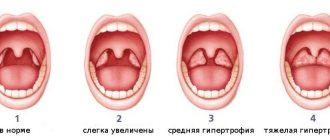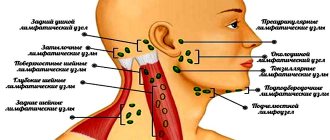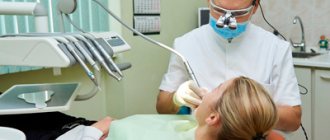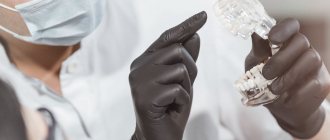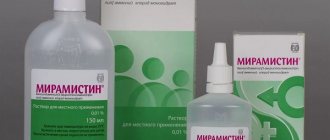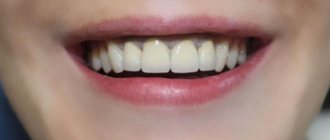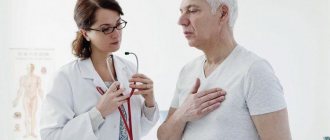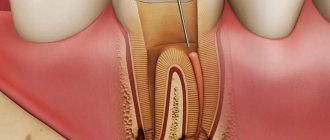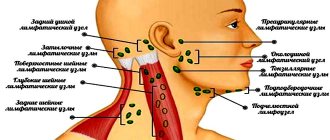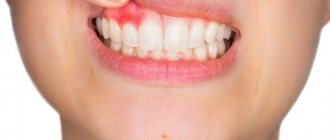Inflammation of the lymph nodes is a common occurrence. The body's lymphatic system, being its protective environment, is sensitive to all kinds of changes. Based on problem nodes, conclusions are drawn about the source of infection. If the lymph node behind the ear is inflamed, then you should pay attention to possible sources of infection located on the head. Having found out the cause, you should immediately begin treatment.
Purpose
The lymphatic system, consisting of blood vessels and capillaries, permeates the entire body like a network. The viscous living liquid, as it flows, captures nuclides, toxins, cell waste products, microorganisms, bacteria and other harmful substances from them, as well as from connective tissues. On the path of lymph there are “sanitary” points - lymph nodes, including the parotid lymph nodes, the lymph node behind the ear, near the ear, under the urine of the ear, etc., where lymph is filtered. All lymph nodes have 2-4 inputs for lymph and 1-2 outputs. Having entered the gland, the fluid does not flow directly into the exits. It flows through curving corridors (sines), which allows it to better free itself, to cleanse itself of what it has collected. This is facilitated by lymphocytes that produce nodes. The path of the lymphatic system passes mainly along the veins.
The parotid glands clear lymph, which flows into the posterior auricular vein. They cleanse the lymph of the neck and salivary glands. The postauricular lymph nodes protect the parietal and temporal regions. In addition, the lymph nodes behind the ears protect the areas of the eyes, ears, throat, and jaw. The lymph node under the ear protects the corner of the jaw, which is located just below the ear. It is called tonsillar.
Diagnostics
If inflammation of the lymph node under the ear is detected, you should immediately consult a therapist. The doctor will conduct an initial examination and prescribe a diagnosis. Conclusions are drawn from the size of the lymph node, the density of the surrounding tissues, the condition of the skin, and pain. If the lymph node behind the ear is enlarged, you may need to visit an ENT specialist.
Only a specialist decides which diagnostics to prescribe. This usually happens:
- Palpation. It is carried out along the ear. It starts at the end of the cheekbone and ends at the beginning of the jaws. The result of the action is an assessment of the size, shape, mobility and volume of the purulent cavity of the lymph node.
- Assess the condition of all lymph nodes. The doctor must make sure that the inflammation is local. This gives direct indications of the possible source of infection. If there are other foci of inflammation, then further research will take a different path.
- General blood analysis. It gives a general picture of the state of the body. Any changes are reflected in the composition of the blood. If the need arises, private clarifying tests are prescribed.
- Ultrasound. Ultrasound examinations are carried out both on the lymph node and on possible sources of infection. What exactly to diagnose is decided by a specialist.
- Histology. This test is prescribed if cancer is suspected.
Location
The parotid lymph nodes cannot be palpated, as they are located under the skin of the temporal bone. They can only be detected in an inflamed state. There may be 1–4 lymph nodes behind the ear.
In the area around the ears there are two groups: superficial and deep.
- The composition of the superficial group is: 2–3 preauricular anterior auricular (in front of the visor) and posterior auricular (behind the concha) lymph nodes located outside the capsule. In addition, there are another 4–5 nodes near the parotid gland (under the earlobe).
- In the deep group there are 2–3 lymph nodes in the thickness of the gland and 1–2 in the lower part of the gland. There may be lymph nodes in the cheek into which lymph flows from the nose, eyelids, and gums. But they were found only in a small number of people examined.
You can see where the lymph nodes are located behind the ear and under the ears by looking at the diagram.
Lymph nodes in the ear area: 1) preauricular; 2) posterior auricular (behind the ear)); 3) anterior (parotid); 4) under the ear (tonsillar)
Nettle
A medicinal infusion can be prepared from this herb. To do this, just take a spoonful of dried nettle leaves, chop them and pour 250 ml of boiling water. After this, the liquid is brought to a boil and infused for about 15 minutes. When the infusion has cooled a little, you can strain it and drink half a glass before breakfast, lunch and dinner.
If we are talking about treating a lymph node behind the ear in a child, then the child may not like the rather specific taste of the medicine. To remedy the situation, some add a little natural honey to the liquid. However, doctors do not recommend giving nettle to children. If we are talking about a child, then it is better for him to prepare the following medicine.
Briefly about diseases
Swollen lymph node of the ears. This phenomenon is called lymphadenopathy. If the process is activated, the gland goes into an inflamed state. This stage of the disease occurs with lymphadenitis.
Swelling of the lymph glands contributes to the accumulation of lymphocytes and phagocytes, which begin to be actively produced by the nodes to fight the disease, since the outflow of lymph has stopped.
Lymphadenitis can be acute, chronic and chronic in an acute form (hyperplastic):
- The acute form is purulent, which can lead to periadenitis, as well as diffuse purulent inflammation. This form of inflammation is called adenophlegmon.
- Chronic are also purulent, but in varying degrees of exacerbation.
- Chronic in its acute form is called hyperplastic due to the fact that exacerbations of inflammation alternate with periods of subsidence.
The lymph node under the ear, in front of the ear, near the ear, near the ear, behind the ear became inflamed. Most often this is a consequence of a blown ear, or an inflamed injured jaw. Possibly a sore throat. In this case, home remedies are usually used. If the inflammation does not decrease and takes a more aggressive form, qualified consultation is required. The reasons may be:
- An infection that occurs in the parotid area or in the body.
- Colds, especially during the autumn-spring period.
- Inflammation of the tooth root (pulpitis).
- Infection caused by piercing an earring.
- Neuritis (inflammation of the auditory nerve).
- Conjunctivitis (eye disease).
- Pneumonia.
- Bronchitis.
Any infectious diseases, any entry of bacteria into the body can cause inflammation of one nearby organ, or all lymph nodes will react with inflammation.
Aloe
To prepare the medicine, a plant that is at least two years old is suitable. The lower leaves of aloe are used. After grinding, about 150 ml of juice can be squeezed out of them.
The resulting liquid is poured into a glass of natural honey. After this, 2 incomplete glasses of Cahors are added to it. The resulting medicine is infused for 5 days in a dark and fairly cool place. After this time, it is recommended to drink the tincture one tablespoon before meals.
This product is allowed to be given to children, but only over 6 years of age. Do not forget that the drug contains alcohol, so you should exercise caution or avoid such treatment altogether.
Symptoms
If the process of inflammation of the lymph nodes in the ear area begins to worsen, then this is a suspicion of a disease called lymphadenitis with all the ensuing consequences:
- Pain appeared on palpation.
- The softness of the consistency disappeared and became harder.
- Perhaps the iron does not roll under the fingers.
- The lymph node has increased in size.
- Hyperplasia of lymphoid tissue (reaction to the appearance of an inflammatory process).
If pus has formed in the swollen gland, this will affect the person’s condition:
- The temperature has risen.
- I had a headache.
- Lost appetite.
- Malaise.
- Earache.
Celandine
Using this herb you can also prepare medicinal compresses. To do this, you need to collect several tops of celandine, wash and pass through a meat grinder or blender. The resulting slurry is mixed with the same volume of medical alcohol and left in a dark place for 1 hour.
After this, you need to cut off a small piece of gauze, moisten it in hot water and dip it in the prepared infusion. Next, a thin tissue is applied to the affected area, where the greatest inflammation of the lymph node is observed. The top of the gauze is covered with a piece of cellophane and warm woolen cloth. You must walk with the compress for at least five hours. Therefore, it is better to cook it overnight and remove it in the morning.
Treatment
You need to be especially careful with the ear lymph nodes. They are part of the head. Their inflammation, especially purulent, can affect the condition of the entire head and is life-threatening.
If the cause of inflammation is a cold, flu and similar causes, treatment consists of eliminating the cause. The provocateur of inflammation is cured, the swollen gland is healed. It must be remembered that it is impossible to heat inflamed glands.
In acute inflammatory processes, antibiotics and restoratives are required. If the pain is severe, you can use anesthetics and analgesics.
In the case of complicated purulent inflammation, the abscess is opened, and then drug therapy is carried out. Antibiotics are also not ruled out.
Oat milk
To prepare this homemade remedy, you need to buy 1 liter of enough fat milk and prepare a handful of oatmeal. After this, the liquid is brought to a boil and oats are added to it. The heat must be reduced and the medicinal decoction kept on the stove for 35-40 minutes. After this, the liquid cools slightly and is poured into glasses. You can add a spoonful of honey to each of them. Children (depending on age) should be given half or a third of a glass three times a day. For adults, the dose increases.
Is it dangerous to heat the lymph nodes?
Some traditional medicine recipes involve heating the inflamed area. However, doctors strongly recommend not to carry out such procedures if pus begins to accumulate in the lymph nodes, especially if we are talking about small children. The fact is that warming procedures provoke even greater inflammation. Against this background, the infection begins to spread faster throughout the human body, which is why his condition only worsens. In the most severe cases, blood poisoning occurs.
However, at the initial stage, warming procedures are permitted. Inflamed nodes can be covered with a woolen scarf.
Why do atheromas appear behind the ears?
Research into the mechanism of atheroma formation is still ongoing.
Today it is known that the epidermis (the surface layer of the skin) consists of layers of cells that constantly peel off from the surface during the process of growth. In the case when skin cells stop exfoliating and, accumulating and multiplying, begin to move into the tissues - a cyst wall is formed - atheroma. Inside the formed cavity, dead skin cells rich in proteins - keratin, and sebum accumulate. This is how atheroma is formed.
On the surface of the atheroma you can always find an enlarged pore through which the cyst can drain. In this case, we may notice yellowish masses with an unpleasant odor of decomposing sebum.
Other cysts, called epidermal, are very similar in appearance to atheromas. However, epidermal cysts are formed from sweat glands and their contents are very different in composition from the contents of atheromas.
Drug therapy
On the one hand, inflammation of the lymphatic structures is a consequence of infectious diseases. First, the doctor takes measures to eliminate the underlying cause of lymphadenitis or lymphadenopathy. For this purpose, antibacterial therapy is prescribed, which is carried out using broad-spectrum drugs: sulfonamides or cephalosporins.
The following are prescribed as additional agents that relieve symptoms and normalize the immune response:
- Antihistamines. Designed to relieve the inflammatory reaction and eliminate chronic inflammation. The drugs reduce swelling, relieve pain, and reduce the severity of hyperemia.
- Vitamin complexes. Necessary for restoring the body's protective functions. It is imperative to normalize vitamin C levels.
- Immunomodulators. Means whose effectiveness is aimed at normalizing the body’s immune response. Can only be used after a doctor's prescription.
After the causes have been eliminated or during the main treatment, physiotherapy is carried out in order to eliminate the symptoms of the disease and eliminate the likelihood of complications. Among the most effective procedures, electrophoresis and helium-neon laser irradiation should be highlighted.
